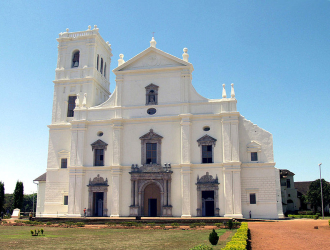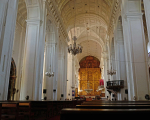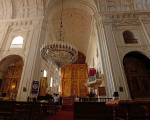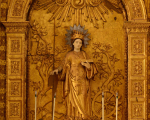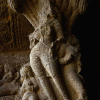Goa under the Portuguese was the headquarters of Catholicism throughout South and East Asia. Various Christian denominations built monumental churches, basilicas, cathedrals, chapels, convents and nunneries in Old Goa, in the styles developing in 16th-18th century Europe—mannerist, baroque and rococo. The churches also reflect the Manueline style which was prevalent in early 16th-century Portugal, named after King Manuel I, whose rule coincided with the astonishing successes of Portuguese navigators, who successfully rounded the Cape of Good Hope, reached South Asia, set up colonies along the coastal areas of Africa, became the first Europeans to discover Brazil, and charted new ocean routes to the Far East. The Manueline style exhibits elements of design and craftsmanship adapted from medieval Portuguese and Islamic architecture, along with motifs from ships and the sea-faring world. The churches of Goa are also significant for their collections of Christian art, sacred relics and religious iconography.
This image gallery documents the important design elements, including interior and exterior views, materials used, craftsmanship, iconography, statuary and relics, which make the churches an outstanding example of Christian heritage in India and Asia.

